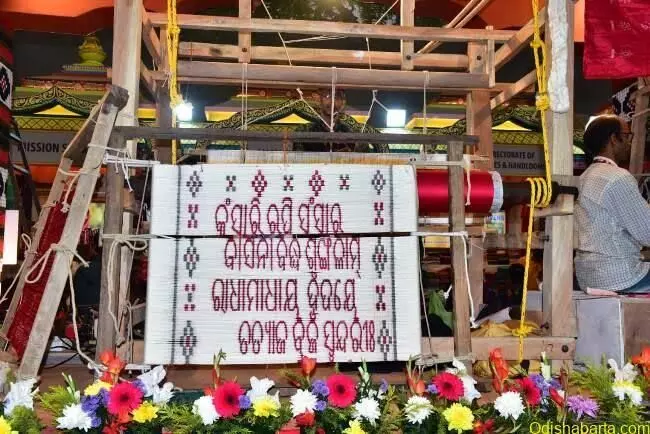Odisha promotes 'Karuna Silk' at IITF
The 'Karuna silk' production method allows the extraction of silk without killing silkworms
By Newsmeter Network
Odisha promotes 'Karuna Silk' at IITF
Bhubaneswar: The Odisha government has been showcasing a new variety of 'Karuna silk' which is produced without harming silkworms and minus chemical dye at the International Trade Fair in New Delhi, an official statement said.
Promoted by Odisha government's Handlooms, Textiles and Handicrafts department, the live demonstration of this new variant of silk at 'Odisha Mandap' at the international trade fair showcases the ethical and sustainable silk production redefining traditional methods and is attracting visitors and fashion lovers, it said.
The 'Karuna silk' production method allows the extraction of silk without killing silkworms. Usually, the cocoon carrying the live worm inside it is boiled in water before extracting the fibres. But in 'Karuna silk' production the silkworm is allowed to grow and fly away as a butterfly by rupturing the cocoon. Then, the hatched cocoons are collected and the silk threads are extracted from them. 'Karuna' means compassion in Odia.
As per experts, the production of a single mulberry silk saree requires between 10,000 and 20,000 cocoons. Similarly, creating a tassar silk saree requires around 5,000 to 7,000 cocoons. Hence, the same numbers of silkworms lose their lives in the process. However, 'Karuna Silk' has become an exception, an official said.
For a couple of years, the state government has introduced the sans cruelty 'Karuna Silk' as the traditional 'Khandua Patta' for Shree Jagannath Temple, Puri. Weavers from the Rautapada region near Khurda are producing this typical silk by inscribing the verses of 'Geeta Govinda' by Poet Jaydev on it.
Odisha grows four types of silk namely Eri, Mulberry, Tassar and Muga. Earlier Eri silkworms were reared for producing 'Karuna silk'. But recently the silk is being extracted from all 4 variants. Odisha government encourages the cultivation of various types of silk across 22 districts of the state.
Earlier, artificial dye was used to colour 'Karuna Silk' while producing various fabrics. However, in the current variant, the natural colour of the silk fibre is kept as it is, promoting a new practice in Indian textile production.
The final products like sarees, cloth materials and modern jackets of silk are showcased and sold at the state-run 'Amlan' outlet under the Directorate of Textiles.
Weavers from the Gopalpur region of Odisha's Jajpur district are demonstrating the traditional weaving techniques live of 'Karuna silk' drawing the attention of the visitors to the pavilion.
"I learned about Odisha's 'Karuna Silk' for the first time at the trade fair. The method of producing silk without harming the silkworms and not using any chemical dyes is new and innovative," says Udit Jain a visitor from Delhi.
"The visitors to the Odisha pavilion are showing keen interest in Karuna Silk garments. While witnessing the process of ‘Karuna Silk’ production they visit our stall to experience the finished products," says Babuli Das from Amlan outlet at IITF.
Inputs from PTI